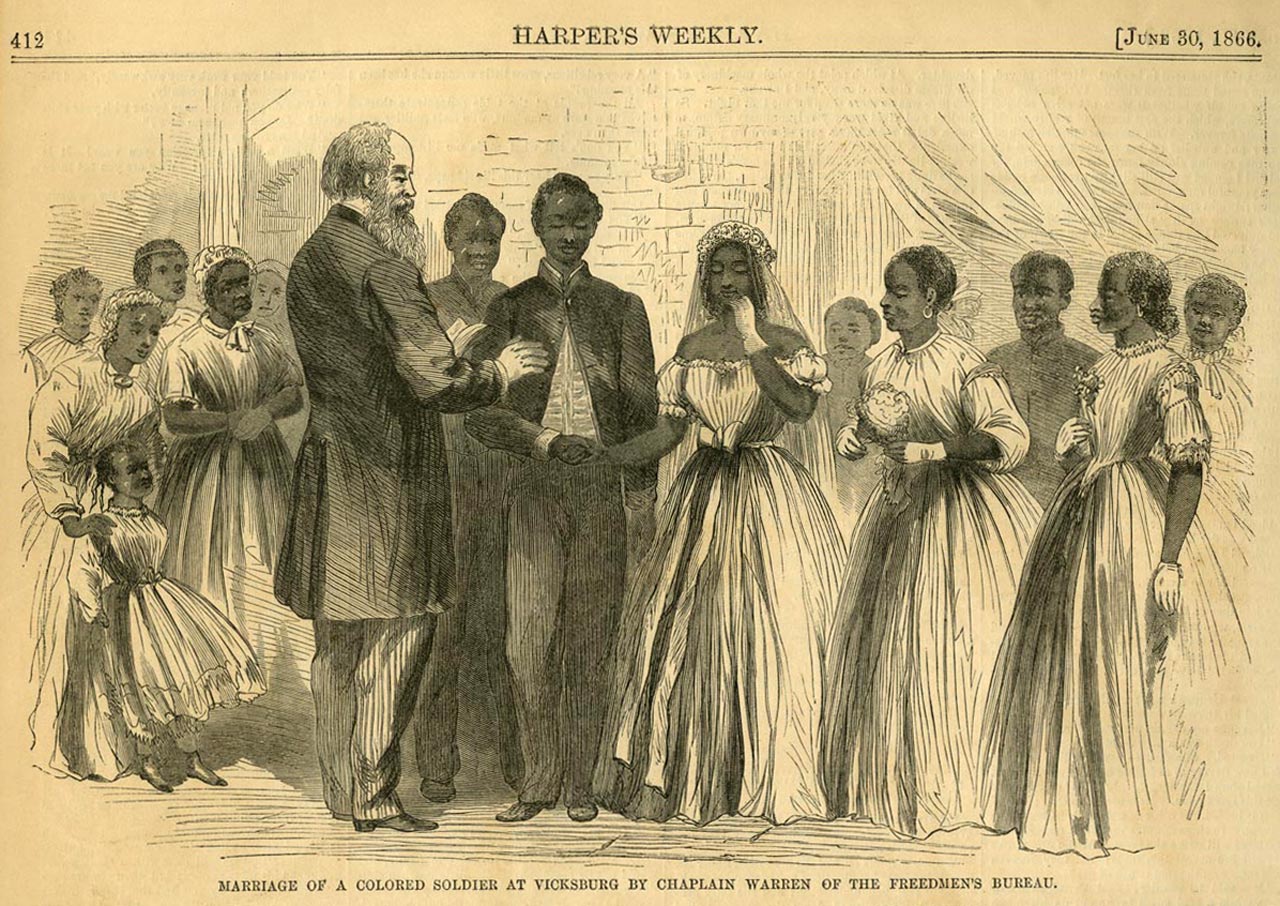Genealogists researching enslaved African Americans face serious challenges. Records that exist for the free population do not exist for the enslaved since slaves were considered property and were prohibited from reading, writing, owning land, or even legally marrying. This is why Virginia’s few surviving cohabitation registers are so important.
The Library of Virginia recently conserved the Register of Colored Persons of Smyth County, Virginia, cohabiting together as Husband and Wife on 27th February 1866 at the request of John Graham, Smyth County Clerk of the Circuit Court. It is one of only twenty one cohabitation registers known to exist and is included in the Library’s cohabitation register digitization project.
This project aims to digitize, transcribe, and make available via the Virginia Memory website the images of all known Virginia cohabitation registers and the related registers of children whose parents had ceased to cohabit.
Prior to the Civil War, Virginia law provided no legal recognition for slave marriages. What is certain and what documents like the cohabitation registers reveal is that slaves did marry and consider themselves to be married in spite of the lack of legal protection and recognition. In 1865, Commissioner Oliver Otis Howard of the federal Bureau of Refugees, Freedmen, and Abandoned Lands (commonly called the Freedmen’s Bureau) directed the assistant commissioners of the states to order the county clerks to make a registry of such cohabiting couples. A year later, the General Assembly passed an act to amend the Code of Virginia to legalize the marriages “of Colored Persons now cohabiting as Husband and Wife.”
Beyond accomplishing the original goal of the cohabitation registration which was the formalization of preexisting slave marriages, the information recorded in the registers is invaluable today to genealogists and historians as it was often the first time that a former slave appeared officially in the public record. For both husband and wife, the cohabitation registers record name, age, place of birth, residence, occupation, last owner, and last owner’s city or county of residence, as well as the names of any children with the ages of each, and the date of commencement of cohabitation.
Ink-jet copies of the register will be available at the Smyth County courthouse and Mr. Graham plans to present a copy to the local Mt. Pleasant Preservation Society. The register, transcription, and searchable index are available online along with the other registers from Virginia localities in the Cohabitation Register Digital Collection in Virginia Memory. To find it use either the link provided or go to Virginia Memory, choose Digital Collections, then Collections A to Z, and finally Cohabitation Registers.
– Sarah Nerney, Senior Local Records Archivist












When I originally commented I clicked the “Notify me when new comments are added” checkbox and now each time a comment is added I get three emails with the same comment.
Is there any way you can remove me from
that service? Cheers!
We were experiencing some difficulties after a software upgrade. We believe that the problem has been corrected. If you are still receiving multiple notifications, please let us know.